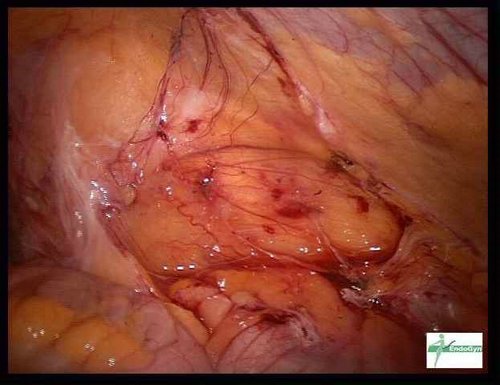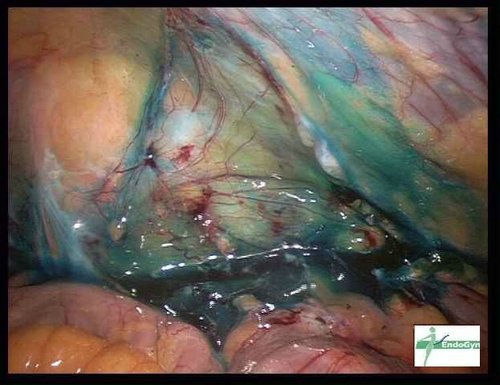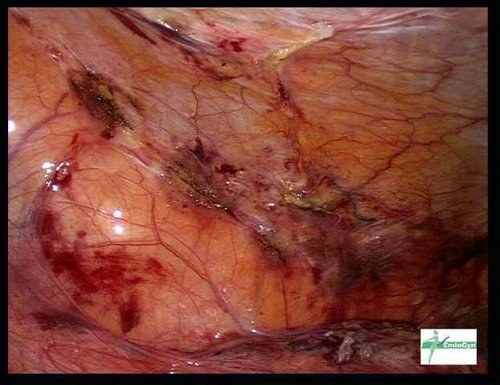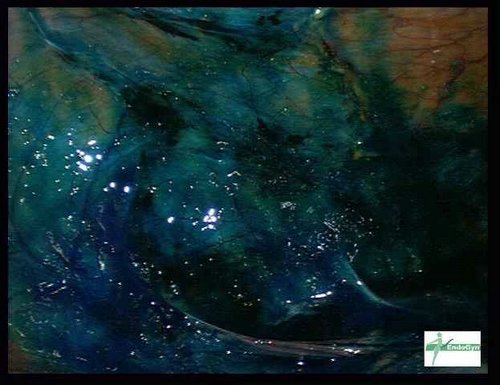Unsuccessful surgeries
Unsuccessful surgeries with carbon dioxide gas
Please see above what happens, if surgeons don't use any adhesion barriers…
And here you can see that even if using the best adhesion barrier available (SprayShield / SprayGel), but WITH carbon dioxide,
adhesiolysis surgery is in most cases USELESS.
This happens after a long laparoscopic adhesiolysis with carbon dioxide gas:

and after applying SprayShield / SprayGel: you see only some punctual clothing of SprayShield / SprayGel, it doesn't stick to the peritoneum,
that is acidotic and hypoxemic, It is also slipping down away from the wounded area !

And here a similar area after gasless-laparoscopic adhesiolysis…

and take a look after applying SprayShield / SprayGel in gasless laparoscopy and compare it with the gas-laparoscopy picture above:

Comment: The narrow stream of SprayShield / SprayGel in gas-laparoscopy doesn't allow an adequate covering of large areas,
the SprayShield / SprayGel is sticking to some small areas and sliding away from the wounded area.
In my opinion it happens because the gas pressure narrows the stream of SprayShield / SprayGel and the peritoneum
is acidotic and hypoxemic and so the SprayShield / SprayGel can not connect to the peritoneal tissue !!!
Another conclusion: I strongly believe that the adequate covering of the wounded area with SprayShield / SprayGel
is best possible with gasless laparoscopy. I am also very confident that reducing the time of carbon dioxide laparoscopy,
if used, to less than 2 hours and than convert to gasless Lift-laparoscopy for adhesions surgery,
may be the solution, if one uses carbon dioxide laparoscopy.





